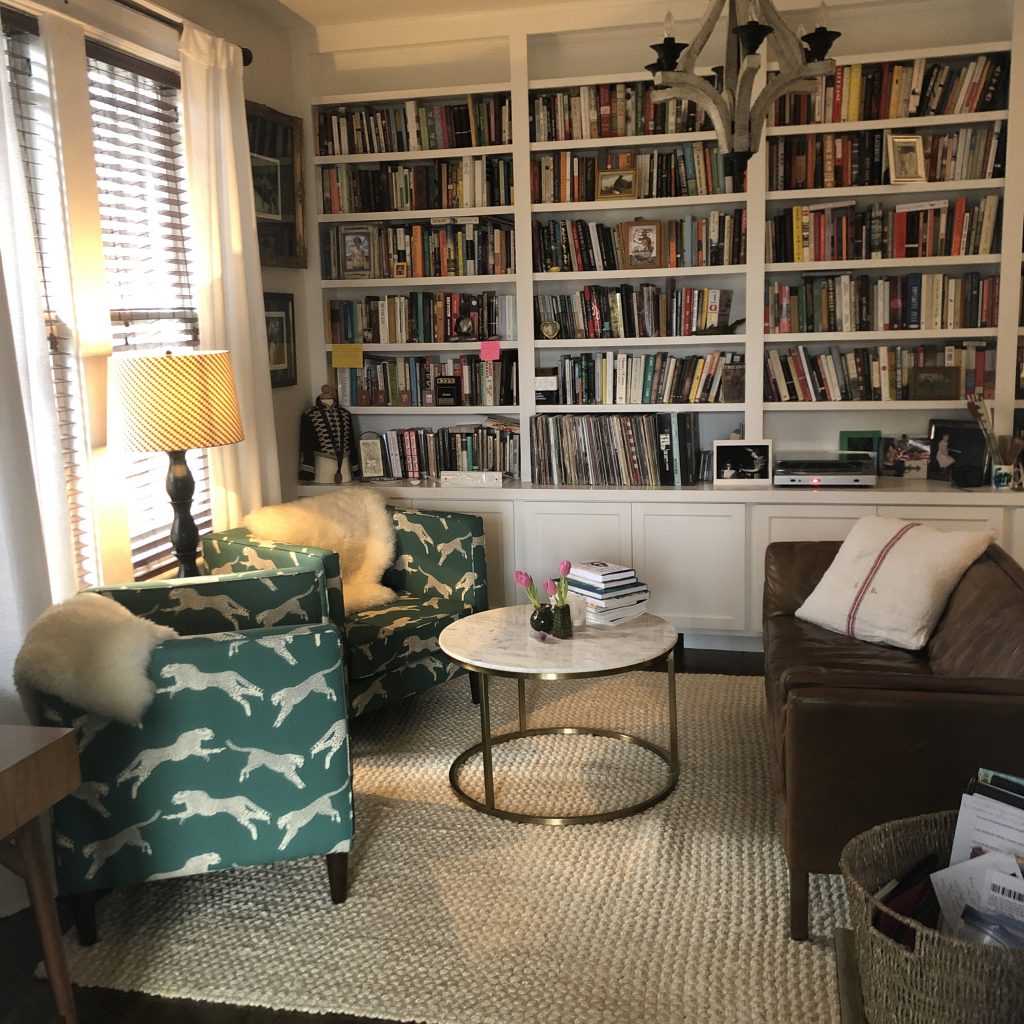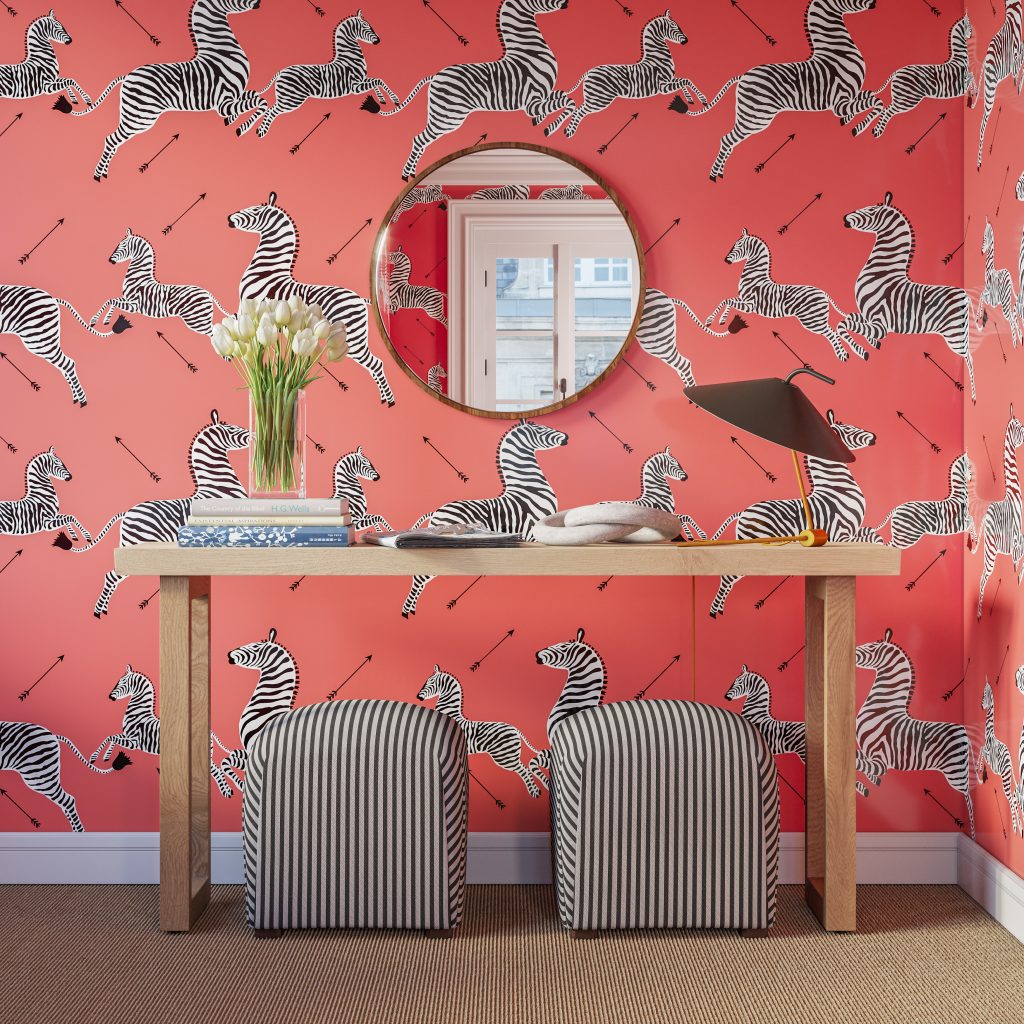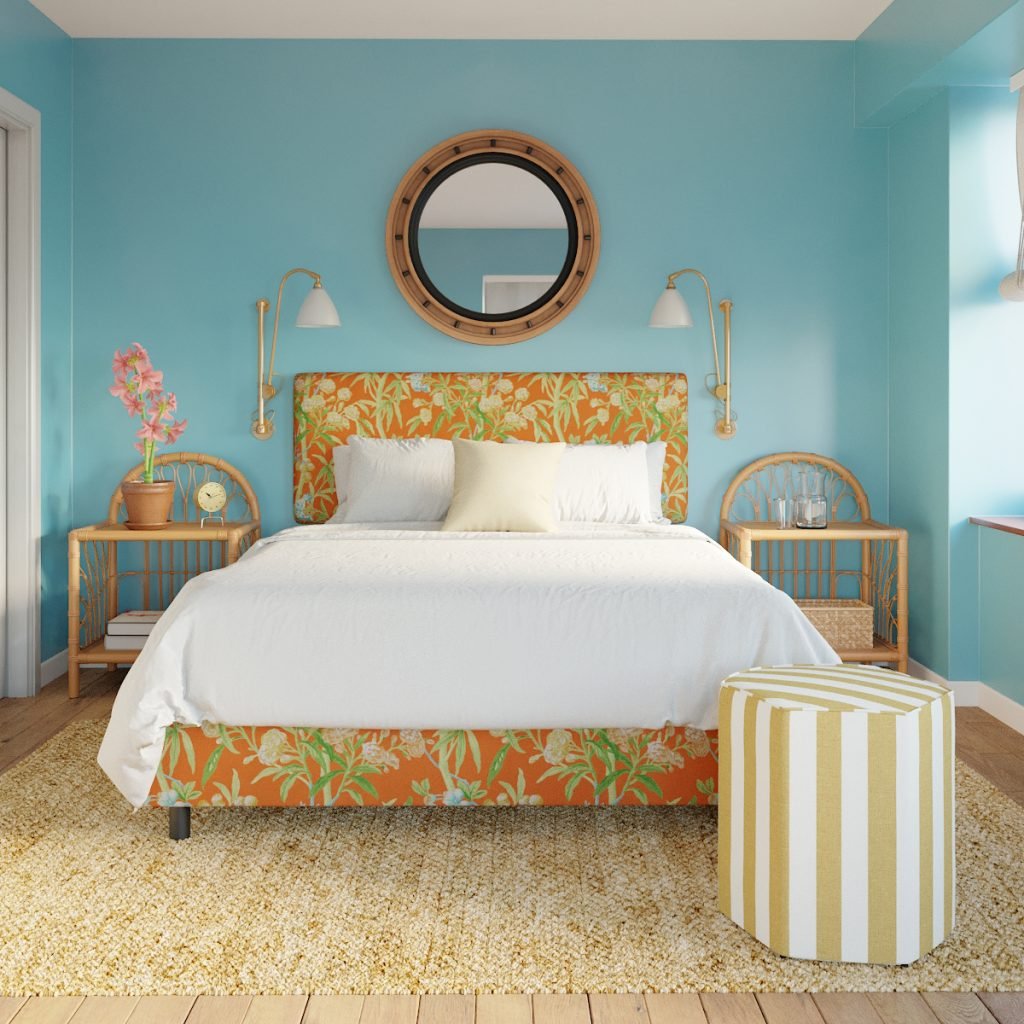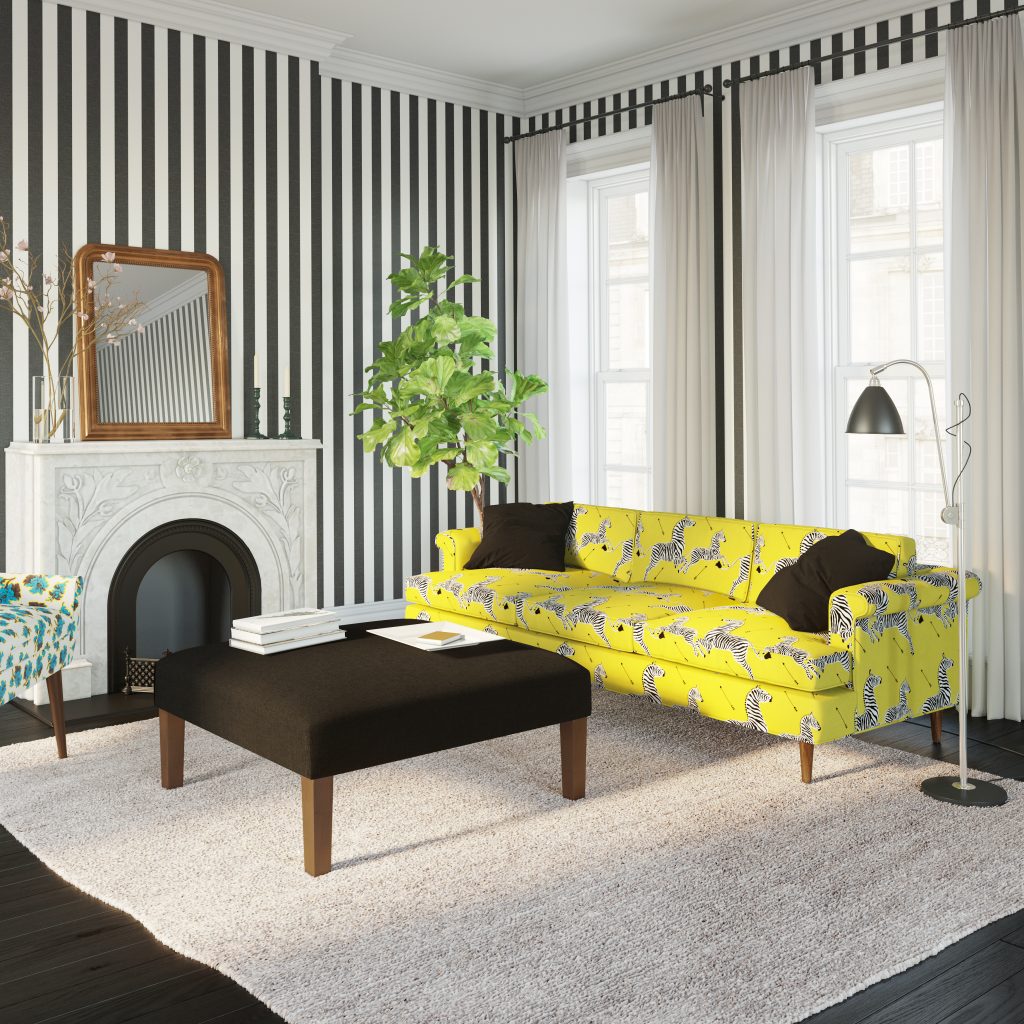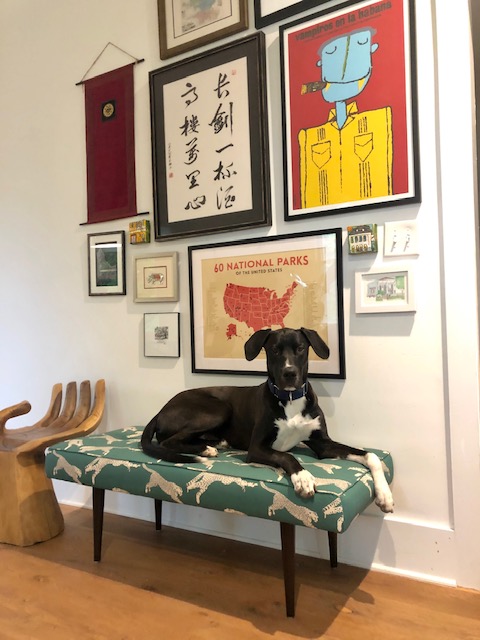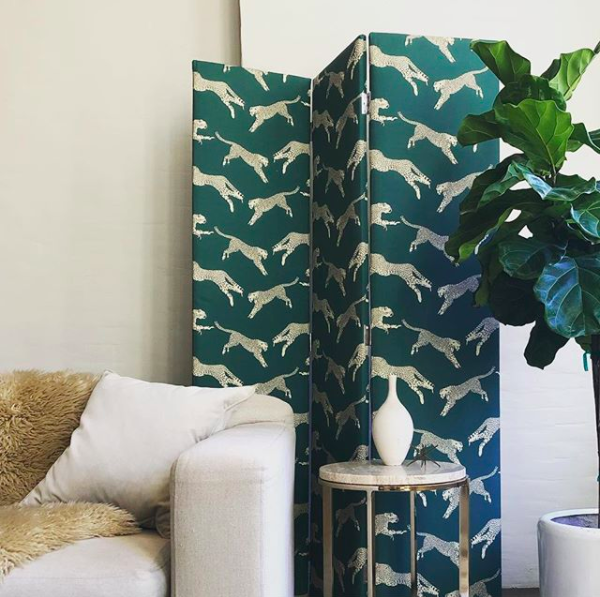What is Scalamandre?
Scalamandre is one of America’s most beloved textile brands. The heritage fabric house’s nearly century-old legacy has made it an ultimate destination for interior designers and décor enthusiasts alike. Founded in 1929 by Italian immigrant Franco Scalamandré, its enduring cultural impact – and that red zebra icon – extends from the Kennedy White House to iconic movie sets such as The Royal Tenenbaums.
Today, Scalamandré sits under the House of Scalamandré, alongside Stark Fabric & Wallcovering, together offering high-quality decorative fabric, wallcoverings and passementerie. Scalamandré also represents a number of brands in the US, including the 380-year-old Tassinari & Chatel, a French provider of luxurious silk textiles, and Aldeco, a Portuguese creator of high-end interior fabrics.
Shop the look: Tuxedo Chairs in Polo Green Cheetah
How to Identify Scalamandre Fabric
Above all, Scalamandré fabric is known for balancing trend with tradition, so there is no one trick for visually identifying when a fabric may be Scalamandré. Materials range from velvets, to leathers and faux leathers, to lampases, to printed and outdoor fabrics – and so much in between. However, there are a number of patterns for which Scalamandré is very well known.
Perhaps most notably, Scalamandré put the Zebra on the map. The timeless red Zebra wallpaper print has been a decades-long cultural touchstone – originally created for Gino’s, a popular Manhattan restaurant in the 1940s, and reaching peak fame as the powder room centerpiece in Wes Anderson’s The Royal Tenenbaums. The Zebra is now available in many colorways – from Safari Brown to Periwinkle. But of course, nothing outshines the classic Masai Red.
Shop the look: Peel-and-Stick Wallpaper in Coral Zebra
Scalamandré also offers a number of other iconic designs, with histories of their own that date back centuries. A few notable examples of Scalamandré designs that may look familiar include:
- Damask – First seen in the Middle Ages (the name is a derivation of the city Damascus in Syria), damask is a type of reversible fabric that is typically formed by weaving a single-colored yarn. They often create intricate floral patterns.
- Paisley – The paisley design traces its roots back to Persia around the year 220 AD, and has been a popular textile design motif for centuries. The bohemian symbol – which is shaped like a teardrop with a curved pointed end that is said to symbolize a cypress tree, signifying life and eternity – still holds cultural prominence, and can be seen anywhere from the classic bandana to Fashion Week.
- Ikat – Ikat refers to Indonesian dyeing technique of resist dyeing (in other words, applying a substance to fabric that blocks dye absorption in certain areas, while allowing absorption in others) before weaving that creates a “blurriness” to the design that makes it instantly recognizable as ikat.
- Plaid – This one probably requires a bit less explanation. While there are many different variations, plaid as we know it nods to horizontal and vertical lines of varying thicknesses. Plaid is a North American word that, in many other part of the world (particularly in Scotland, where the word is derived) is called tartan.
- Toile – This fabric often depicts a single-color detailed pastoral scene, particularly popular on window treatments, upholstery and bedding.
- Chinoiserie – A style that originated in the 1600s, chinoiserie refers to Europe’s interpretation of Asian culture (derived from the French word for “Chinese). The design is easily identified through common motifs including lions, pagodas, dragons, and lush garden and floral scenes.
- Moire – Moire typically refers to a silk that has been treated using a special finishing to give the appearance that appears watery or wavy (unsurprisingly derived from the French word for “water”).
- Botanical – A botanical design is one that depicts plant-life (such as garden plants, herbs, or other foliage), like Scalamandré’s Pondicherry fabric or the well-known banana palm, evocative of the famed Beverly Hills Hotel.
Shop the look: Square Back Bed in Mandarin Lanai
How much does Scalamandre typically cost?
In short, average Scalamandré fabric costs can range greatly depending on what you’re looking for, and how much you’re looking for. The fabric house charges by the yard, so costs will differ if you’re looking for upholstery fabric for a sofa, drapery, or a pair of throw pillows.
The average costs of some of Scalamandré favorites, such as the silky Berry velvet or the iconic ombre Tigre skin print, can be found on Scalamandré’s website with a trade (interior designer) account.
How can I get the Scalamandre quality and aesthetic, but on a budget?
If you’re looking to capture the trendy-yet-traditional spirit of Scalamandré at a more accessible price tag and lead time, you’re in luck. In 2019, Scalamandré launched a collaboration with home furnishings company The Inside to bring the spirit and craftsmanship of the heritage brand to everyone. The collection includes exclusive colorways of seven fabric designs from the Scalamandré archive (including the iconic Zebra print), which can be paired with any piece of furniture on The Inside, for the ultimate in customization.
Shop the look: Midcentury Sofa in Yellow Zebra
Through this first-time collaboration, the average cost of a Scalamandré Coral Zebra sofa is less than $2,000, made-to-order with delivery in weeks, not months. Through this partnership, it’s now possible to have the best of both worlds: custom furniture at a cookie cutter price.
Scalamandre x The Inside bestsellers:
- Square Back Bed in Mandarin Lanai
- Peel-and-Stick Wallpaper in Coral Zebra
- Modern Bench in Desert Cheetah
- Scalloped Room Divider in Blush Aviary
Shop the looks: Midcentury Bench and Modern Screen in Polo Green Cheetah


